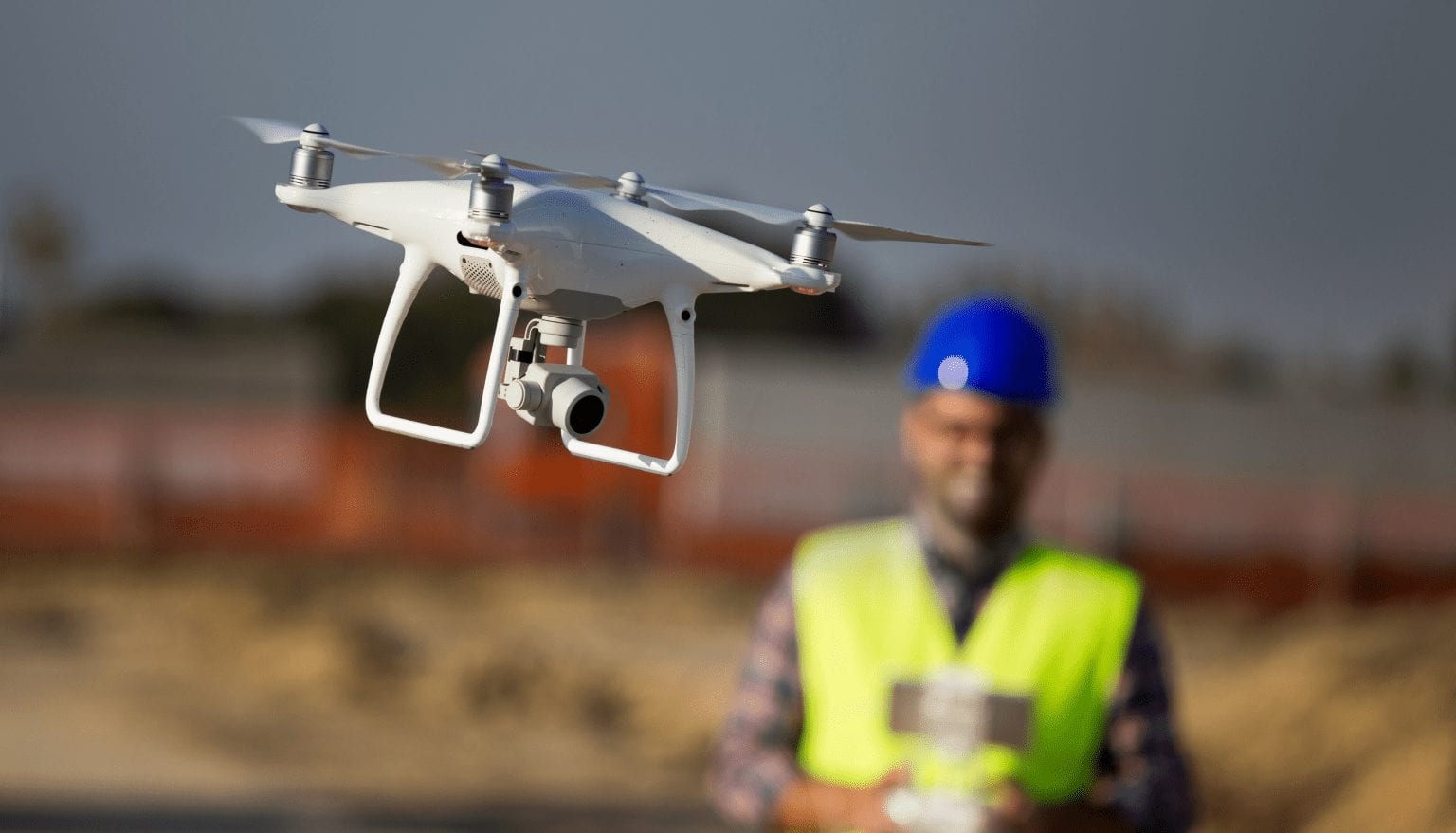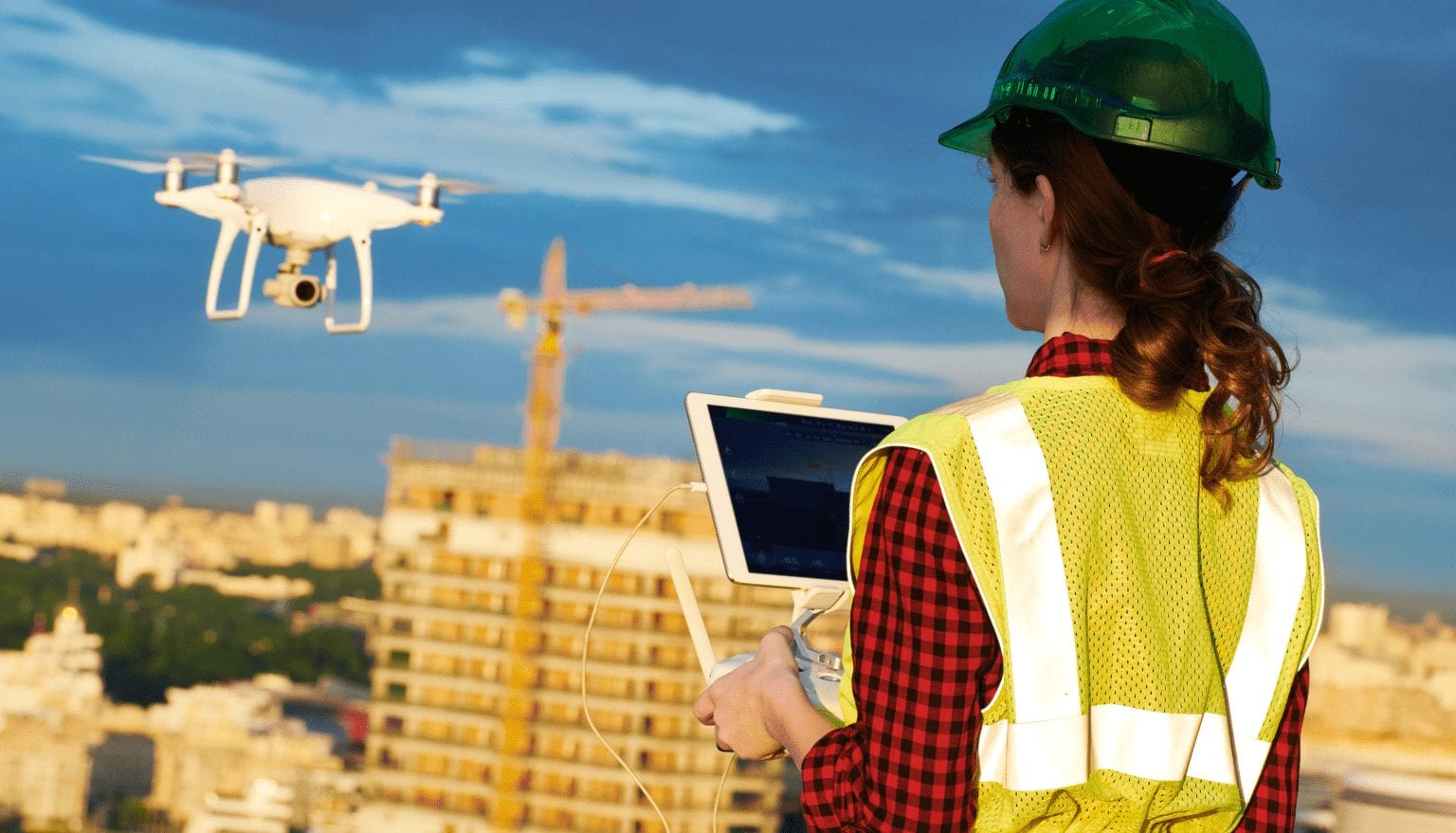Back in 2018, the Federal Aviation Administration (FAA) report forecasted the increased application of drones in crop monitoring, construction site management, search-and-rescue, surveying, filmmaking, and firefighting. But these days, the most promising usage of drones refers to software solutions for insurance industry.
How does it work? Let’s find out.

How Do Drones in the Insurance Industry Work?
Drones are aircraft vehicles that fly without humans on board. The requirements for this technology include
- Being lightweight (less than 25 kg)
- flying in the visible area (on line-of-sight, under 100mph and 122 meters, and during daylight/twilight)
Once used for recreation, the regulations for drone usage include:
- Flying above 400 feet
- Being away from an airport within 5 miles
- Not flying above crowds and other objects
In addition to these federal-level regulations, each local authority has its own rules of working with a drone. Being either managed remotely or carried by software autonomously, drones carry sensors and GPS to work. These characteristics make the technology legally regulated and safely controlled.
When it comes to insurance, drones solve 2 key industry problems:
- Risk mitigation, meaning that drones can improve data harvesting and work with analytics
- Cutting operational costs, meaning that drones provide greater accuracy in inquiry processing and providing customer satisfaction
In practice, drones’ key applications in insurance include aerial information gathering, disaster reaction, research and development, underwriting, and support to claims processing. With greater inclusion, they have also started serving special-purpose spheres with their particular problems.
Pros and Cons of Drones in Insurance
The main input of drones in insurance is in enabling enhanced inspection on-site, which is secure, quick, and cost-effective simultaneously.
Among the precise advantages of drones in insurance, its top 3 tangible benefits are:
- Risk management. By making an aerial assessment, drones show risk areas, so insurers can react quickly and take measures on the earliest damage stages. This saves money and enables better management of resources.
- Natural disaster monitoring. In crises, drones can get into the most dangerous areas and collect the necessary data humans cannot reach. Also, drones serve insurance in protecting locals from possible threats by identifying their tentative signs in advance. This also saves money, since fewer adjusters are needed to monitor the area.
- Claims adjudication. Drones are effective in tracking and improving claims, especially in the dimension of workers’ compensation. By entering dangerous areas alone, drones protect humans from harm.

At the same time, drones in the insurance industry have some shortcomings. Here are the most challenging ones:
- Strict regulation. The FAA rules significantly limit the freedom of movement for drones, including the maximum height, distance, and needed certification.
- Expensive setup. Even though drones save tremendous sums for insurers, switching to this technology is costly still. Moreover, they need internal regulations, complete registration, and training for your workers to start using drones.
- Risk of lawsuits. These days, using drones is still risky due to the danger of receiving a lawsuit because of hitting someone or something. This causes extra problems.
Drones in the Insurance Market: Current Situation
These days, only several insurance companies use drones, which turns their possession into a competitive advantage. While some insurers spend tremendous sums on massive aircraft or human relocation, others benefit from using compact, easy to maneuver and launch, and cheap drones.
Among the various perks of using drones in insurance, cost-effectiveness is the leading one. The financial advantage includes several dimensions:
- Payment processing — safer and faster inspections can save the industry from loses of risky transactions, problems with non-effective claims management and fraud protection, and slow information handling.
- Resource management — drones can provide an accurate inspection that assists in better allocation of resources.
- Workforce safety — using drones for insurance purposes initially guarantees that the worksite is secure and possesses no hidden threats.
How Drones Can Be Used in the Insurance Market: Long-term Perspective
There are 3 appearances drones in insurance can take in the near future:
- Line-of-sight drones. These vehicles fly at a height no more than 400 feet above ground level. They still require a human to control the flight. Such drones help to inspect the site and provide accurate data an insurance company can work with.
- Remote monitoring. Such drones can appear in the next couple of years. Once we collect all the needed experience in working with drones, we’ll be ready to provide them more freedom. Among all, drones can start flying higher and further.
- Self-piloting drones. Letting drones fly without any human involvement can be possible in more than 5 years only. This way, they can cover long distances and use wireless data communication.
Drones for Insurance Inspections
Inspection is one of the most promising and attractive areas for drones application. Precisely, they can reach lands that are huge and remote. This treat is especially beneficial for working with crops and managing threats that are not visible from land. Each insurer can equip a drone with particular lenses to inspect relevant issues better than humans.
The interesting application of drones is roof inspections. Checking roofs is an ordinary activity that always possesses a severe risk of harm and time waste. A drone takes on itself information collection and possible threats.

Drones in Commercial Insurance
Since 2016, the FAA has diminished control over commercial drones. Because of that, the very application of drones in insurance became possible.
Nevertheless, drones experience stricter regulation in business than in recreation. Among all, the drone operator should have a license, since personal insurance doesn’t work here. To use drones legally, check with your insurance broker the adequate insurance coverage.
Auto Insurance and Drones
Sometimes, drones can help insurers by generating some extra work. For example, drones can damage cars. If this happened to your vehicle, please check whether you’ve bought the optional comprehensive insurance. If a drone crash-landed into somebody’s property, use your homeowners or renters insurance.
Drones in Claims Processing
Claims processing is the key sphere where drones demonstrate their effectiveness and efficiency. They help in various dimensions: accelerating the processing speed, increasing the reacting accuracy, and guaranteeing customer satisfaction.
In practice, insurers use drones to understand the reasons for fires and spot the damaged areas. They check and determine the extent of loss and verify the damage caused by natural disasters. Drones make fast and high-resolution images that are easy to work with and don’t need a human expert or claims adjuster’s involvement. As a result, an insurance company has all the necessary data to quickly start the construction work and accurately repair the damaged areas.
Drones for Risk Assessment in Insurance
Drones are great for managing risks. According to the Deloitte article about the insurance industry drone use, their key risk management achievements include enhancing data collection and cutting operational costs.
Precisely, drones gather information on preventive maintenance and damage evaluation in a generalized data set. Moreover, they save money by better allocation of resources and generating ROI for investing.
Fraud Monitoring
Drones are effective for fraud monitoring. In this dimension, they can check the validity of claims by using drone camera images prior to and after the event. Drones are an efficient method for data gathering and design mitigations. The technology makes monitoring and reacting to fraud more proactive and predictive.
In agriculture, the positive impact of drones is the most illustrative. Daily, they are able to collect data about 50 to 1,000 acres, reducing the time on settling claims from several days to a couple of hours. The aerial images taken on-sight provide an opportunity to incorporate AI for automatic processing, which can reduce this process to seconds.
Why Insuring Drones is Challenging
Even though drones possess some evident advantages, they are still scary for a wide public. In addition to this, the legal regulation of their usage is not easy to understand. Without expert help, it’s hard to make a drone work for your benefit.
The second challenge is pricing. Many drones in the insurance industry have both installation and management problems. On the one hand, an insurance company requires tremendous resources to install a drone. On the other hand, the technology still cannot incorporate the years of data for the factor modeling needed.
Finally, there exist some safety concerns. Drones can crash-land and damage someone’s property. Because of that, it’s important to reduce the number of accidents.
Future of Drone Use in the Insurance Industry
The drones in insurance have bright prospects, according to the Deloitte report. Namely, there are 4 dimensions where drones can solve future problems:
- Well-developed regulatory framework. Drones are capable of setting clear boundaries and handling insurance-connected issues.
- Growing demand for high-quality information. Drones have outstanding geospatial analysis capabilities, which encourages insurers to use them more.
- Greater attention to data-driven decisions. Drones satisfy the demand for instant access to precise data and processing tools.
- Demand for new business models. A drone is an autonomous avoidance system (like any other smart house solution), which is the contemporary technological trend.
Finally, drones are valuable for the information they collect. Not only the development of technology but also its integration into existing structures is crucial. Thus, the new technological reality requires new decision-making procedures, and the insurance companies should start thinking of developing them today. Otherwise, they risk becoming outdated pretty fast.
Intellectsoft has created impactful solutions for EY, the London Stock Exchange, and EuroAccident. Talk to our experts today!